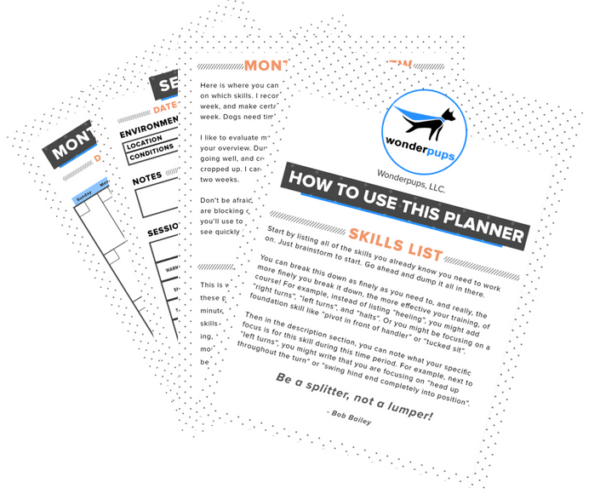Have you ever been trying to train a behavior, or maybe UNtrain a problem behavior, and after making a certain amount of progress… get totally stuck where you can’t seem to move forward to the next step?
Happens to me all the time. Well, hopefully not as often as it used to. But it definitely comes up.
In this podcast, we talk about a strategy to apply when you find yourself stuck while training. Anytime we are trying to shape a behavior, and get trapped on a plateau of some intermediate step… and can’t quite push past it to make progress again.
I always find having a plan, some kind of structured action that I can take, helps a lot to relieve my personal frustration (which tends to negatively affect my training). So I find it helpful to break my options down into 3 categories, which mirror the A, B, and C of our operant contingency.
Anytime we find ourselves repeating the same thing over and over again, expecting different results… well that’s the definition of insanity, right?
So to get different results, we need to change something. But what? Looking at each section of our ABC is one way to break down options so they don’t seem quite so overwhelming.
A – Antecedent
This is the cue, but in training, it’s more than just the cue from the trainer, it’s the whole picture… the setup of the training session and everything in it.
- your body
- dog’s position
- any props
- the environment in general
All of this functions as the cue.
B- Behavior
This translates to criteria.. what exactly I’m clicking for. To get the behavior moving again, I can vary what I’m clicking for… sometimes even backing up and reinforcing the previous step a few times, and then ping ponging with the current step.
C – Consequence
- Change what the reinforcer is
- Change HOW it’s delivered
- Change how it resets the dog.
Other considerations:
- Timing – are you clicking what you think you’re clicking? Video is helpful here, especially slow motion video.
- Conflicting learning history – A previously trained behavior is overlaying the new one we are working on. (This really is often an “A” problem, and changing the antecedent helps)
- Classical-Operant interference – Some classical association or reflexive behavior is inhibiting or conflicting with the operant behavior you are trying to teach.
